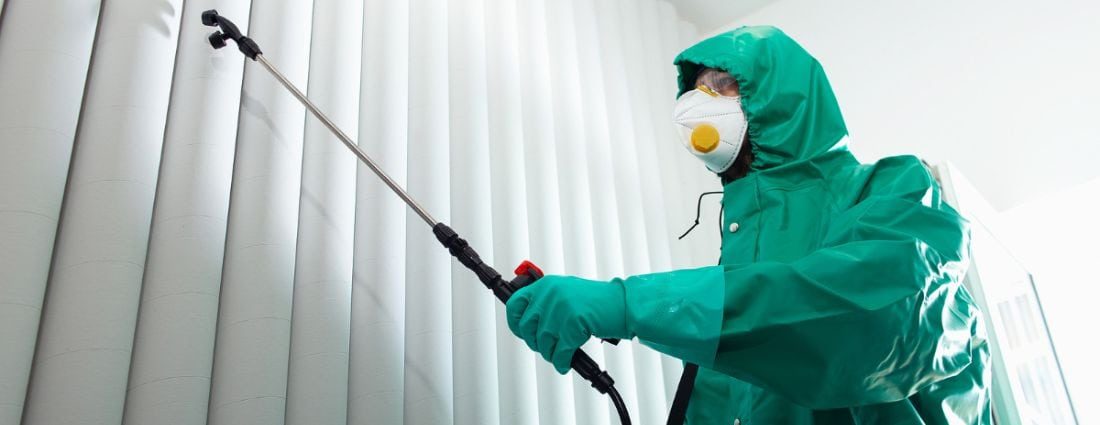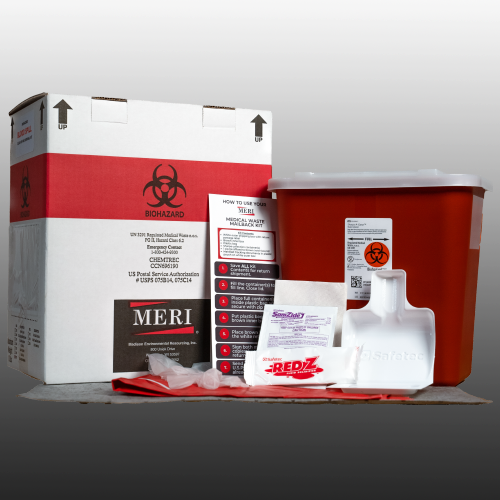Clandestine Lab Cleanup: Comprehensive Decontamination for Hazardous Sites
Clandestine Lab Cleanup: Comprehensive Decontamination for Hazardous Sites
Blog Article
Professional Biohazard Cleaning and Purification for Blood, Bodily Fluids, and Hazardous Products
The prospective wellness dangers connected with exposure to biohazards underscore the critical requirement for careful handling and thorough cleanup. As we navigate the intricate landscape of biohazard cleaning, recognizing the subtleties of regulations, compliance, and the specific devices at play becomes important in ensuring a comprehensive and safe purification process.
Health Threats of Biohazard Direct Exposure
Exposure to biohazards poses significant health threats that can lead to severe effects for individuals and areas alike. Biohazards include a wide range of organic materials, consisting of blood, bodily liquids, mold, microorganisms, viruses, and various other potentially transmittable products. When people enter into call with these biohazards, whether via accidents, incorrect handling, or ecological direct exposure, they encounter the risk of contracting major health problems or diseases.
One of the primary health dangers connected with biohazard direct exposure is the transmission of contagious conditions. Bloodborne pathogens such as HIV, hepatitis B and C, and numerous germs can be existing in biohazardous products, posturing a straight threat to human health. Inhaling air-borne biohazards like mold spores or coming right into contact with polluted surface areas can also cause breathing issues, allergic reactions, and other adverse wellness impacts.
Furthermore, biohazard exposure can have long-lasting wellness implications, with some diseases materializing years after the first call (Blood Cleanup). For that reason, it is vital to focus on proper biohazard cleaning and decontamination to reduce these health and wellness threats and ensure the safety of neighborhoods and individuals

Specialized Training for Biohazard Cleaning
When it involves taking care of biohazard cleaning effectively and safely, specialized training plays a basic role in guaranteeing appropriate purification treatments are followed. Biohazard cleanup needs certain expertise and abilities to successfully reduce risks connected with bloodborne microorganisms, bodily fluids, and harmful products. Specialists trained in biohazard cleanup undertake extensive instruction on just how to safely handle, eliminate, and throw away biohazardous materials to avoid contamination and direct exposure.
Specialized training for biohazard cleanup covers an array of vital topics, consisting of proper individual protective tools (PPE) usage, bloodborne virus awareness, purification techniques, and hazardous waste disposal procedures. People learnt biohazard clean-up are equipped with the needed competence to examine contamination degrees, identify possible hazards, and carry out ideal clean-up treatments in compliance with regulative criteria.
Constant training and education and learning are vital in the field of biohazard cleaning to stay updated on the most recent decontamination modern technologies, safety procedures, and laws. By buying specialized training, biohazard clean-up specialists can properly react to emergency cleaning circumstances and safeguard both public wellness and the atmosphere.
Significance of Correct Purification Techniques
Utilizing appropriate purification strategies is critical in biohazard clean-up to effectively decrease and get rid of hazardous materials health and wellness threats. Reliable purification not just makes certain the elimination of noticeable traces of blood, physical liquids, and various other biohazards yet additionally targets unseen virus that might posture significant health threats otherwise effectively eradicated. By adhering to strict purification methods, trained specialists can dramatically lower the threat of direct exposure to dangerous microorganisms, infections, and bacteria that might bring about infections or illness.
Correct decontamination techniques entail using specific devices and disinfectants that are specifically designed to reduce the effects of biohazards efficiently. Extensive cleaning and sanitation of polluted areas are vital to protect against the spread of virus and guarantee a safe setting for passengers. Additionally, the proper disposal of biohazardous waste complying with decontamination treatments is important in stopping contamination of other surface areas or individuals.

Equipment and Tools for Safe Cleaning
The proper devices and devices play a vital duty in guaranteeing the efficient and secure cleanup of biohazardous materials. When managing blood, bodily fluids, or harmful products, biohazard cleansing professionals rely upon specialized equipment to minimize exposure dangers and extensively sanitize the afflicted location. Individual safety equipment (PPE) such as gloves, masks, coveralls, and safety glasses are necessary to safeguard against direct call with possibly infectious materials. Additionally, biohazard cleaning kits including disinfectants, absorptive materials, and biohazard bags are utilized to safely include and dispose of contaminated items. Blood Cleanup.
Advanced cleansing tools like hospital-grade disinfectants, HEPA-filtered vacuum cleaners, and misting devices are employed to disinfect surface areas and eliminate biohazards efficiently. Specialized devices such as sharps containers and biohazard garbage disposal containers are utilized to safely take care of sharp things and biohazardous waste materials. By making use of the ideal equipment and devices, biohazard cleansing professionals can guarantee an extensive cleanup procedure that prioritizes safety and security and lessens health threats for both workers and occupants of the damaged space.
Rules and Compliance in Biohazard Cleansing
Appropriate adherence to regulations and conformity standards is paramount in biohazard cleansing to ensure the security of both personnel and the atmosphere. Government companies such as OSHA (Occupational Safety and Health And Wellness Management) and the EPA (Epa) have developed particular standards for biohazard cleanup procedures to decrease health and wellness threats and environmental contamination. These guidelines cover a series of aspects consisting of the handling, transportation, and disposal of biohazardous materials, along with the necessary training and protective devices needed for personnel associated with the decomposition death clean up clean-up process.
Biohazard cleaning companies must remain current with these regulations to ensure that their procedures fulfill the required security requirements. Failing to comply with these policies can lead to extreme consequences, including fines, legal activity, and jeopardizing the wellness of individuals and the environment. By complying with rigorous laws and compliance measures, biohazard cleaning business can successfully minimize threats and ensure a extensive and risk-free cleanup process for all parties involved.
Conclusion
In conclusion, biohazard cleaning and purification require customized training, correct strategies, and adherence to guidelines. Direct exposure to blood, bodily fluids, and dangerous materials poses significant health threats, making it critical to make use of the appropriate devices and tools for safe cleanup. By complying with strict protocols and guidelines, specialists can properly alleviate the risks connected with biohazard exposure and ensure the safety and security of both themselves and others.
As we browse the elaborate landscape of biohazard cleanup, understanding the subtleties of guidelines, compliance, and the specialized tools at play ends up being vital in guaranteeing a safe and thorough decontamination procedure. (Blood Cleanup)
When it comes to managing biohazard cleanup successfully and safely, specialized training plays a basic duty in guaranteeing proper purification procedures are complied with.Utilizing appropriate decontamination methods is essential in biohazard cleaning to efficiently remove unsafe materials and minimize health and wellness risks. In addition, biohazard cleaning kits containing anti-bacterials, absorbent materials, and biohazard bags are made use of to securely contain and get rid of of polluted things.
Government companies such as OSHA (Occupational Safety and Health And Wellness Management) and the EPA (Environmental Defense Agency) have developed specific guidelines for biohazard clean-up treatments to minimize health and wellness dangers and ecological contamination.
Report this page